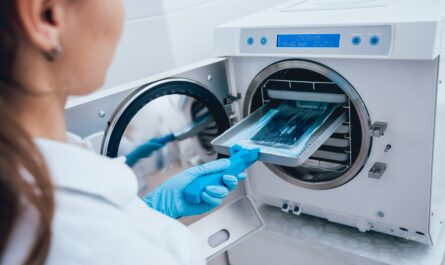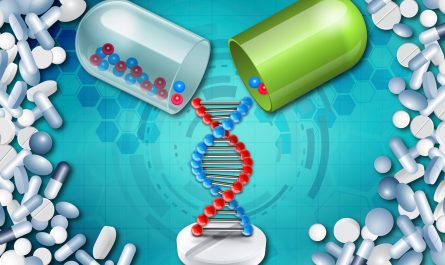Aptamers are oligonucleotide or peptide molecules that bind to a specific target molecule. They are identified through an in vitro selection process called Systematic Evolution of Ligands by EXponential enrichment (SELEX). This process has enabled the development of aptamers against a wide range of targets including proteins, peptides, nucleotides, drugs, toxins, and even whole cells and organisms. Due to their small size and ability to bind targets with high affinity and specificity, aptamers hold immense potential for diagnostics and therapeutics.
Structure and selection of aptamers
Aptamers are usually RNA or single-stranded DNA oligonucleotides that range between 15–80 nucleotides in length. The SELEX process starts with a random nucleic acid library containing 1013–1015 different sequences. This library is incubated with the target molecule, and sequences that do not bind are washed away. The bound sequences are then eluted and amplified by PCR. The amplified pool is used for the next round of selection with repetitive cycles of binding, partitioning, eluting, and amplifying leading to enrichment of sequences that tightly and specifically bind the target. By the 10th-15th round, individual sequences are cloned and characterized for binding affinity and specificity. The best candidate sequences identified as aptamers usually fold into well-defined secondary and tertiary structures necessary for target recognition and binding.
Properties of aptamers
Some key properties of aptamers that make them attractive as therapeutics include high affinity and specificity for their targets. Aptamers can bind targets with dissociation constants in the picomolar to nanomolar range, rivalling monoclonal antibodies. Their specificity arises from unique 3D structures that allow recognition of epitopes not accessible to antibodies. Aptamers are also small in size (8-15 kDa) compared to antibodies, making them well-suited for tissue penetration. They are stable, non-immunogenic and have limited systemic clearance due to their smaller size, extending their in vivo half-life. Their chemical synthesis allows easy modification with other functional moieties like fluorophores and polyethylene glycol (PEG) to enhance bioavailability and pharmacokinetics. Significantly, aptamers can be identified against non-immunogenic targets for which antibodies cannot be generated. Their selection relies solely on the ability to fold into structures binding the target.
Therapeutic applications of aptamers
The unique properties of aptamers have enabled their development as diagnostics and therapeutics against a wide range of diseases. Some of the diseases where aptamers show promise include:
Cancer therapy
Aptamers have been identified that can inhibit growth of cancer cells by blocking receptor-specific ligands involved in proliferation, blocking angiogenesis to starve tumors, or delivering cytotoxic drugs directly to cancer cells. AS1411 is a DNA aptamer currently in clinical trials for treating renal cell carcinoma and acute myeloid leukemia by binding to nucleolin protein on cancer cells.
Macular degeneration
The vascular endothelial growth factor (VEGF) plays a key role in abnormal blood vessel growth causing blindness in age-related macular degeneration (AMD). Anti-VEGF aptamers like Pegaptanib, Ranibizumab and Aflibercept are approved as intraocular injections to bind and inhibit VEGF, thereby slowing vision loss in AMD patients.
Coagulation disorders
Nuclease resistant anti-thrombin aptamers like ARC19499 can inhibit thrombin and have potential as new oral anticoagulants to prevent thrombus formation with lesser risk of bleeding compared to warfarin. Anticoagulant aptamers may also help treat conditions like deep vein thrombosis, pulmonary embolism and heart attacks.
HIV treatment
MBX-234 is a DNA aptamer that binds the chemokine co-receptor CXCR4 on CD4+ T cells, preventing HIV entry. It shows potential as a microbicide to block sexual transmission of HIV. Aptamers against other HIV targets like envelope glycoproteins gp120 and gp41 hold promise for developing microbicides and antiviral drugs.
Limitations and future outlook
While aptamers represent a promising class of drugs, some limitations remain. Their smaller sizes increase renal clearance from blood, necessitating frequent dosing. Chemical modifications to introduce branched PEG chains help improve pharmacokinetics but increase production costs. Inducing an immune response to aptamers continues to be a challenge requiring design of immune-evasive structures. Selection against some targets may not always yield high affinity aptamers. Despite hurdles, ongoing research and development of new aptamer platforms will help address current limitations. As aptamer technology matures, these nucleic acid therapeutics have tremendous scope in human healthcare through early disease diagnostics and targeted treatment of debilitating diseases. The future holds promise of ‘aptamer drugs’ that rival traditional antibody therapies.
*Note:
1. Source: Coherent Market Insights, Public sources, Desk research
2. We have leveraged AI tools to mine information and compile it




